
so_whats_happening
-
Posts
1,442 -
Joined
-
Last visited
Content Type
Profiles
Blogs
Forums
American Weather
Media Demo
Store
Gallery
Posts posted by so_whats_happening
-
-
1 minute ago, bluewave said:
The issue with WWBs coming on so late is that any oceanic kelvin wave generated would also be too late to move the El Niño much more past what we have already seen. Most fall oceanic kelvin waves that have sharp El Niño warming get generated by WWBs during late summer into September. This year we had stronger trades and and absence of WWBs.
I could see it more so sustaining the warmth currently around but the only years I have seen with a substantial subsurface warming this late were 1991-92, 1994-95 ( this one started in July/August timeframe),and 2009-10 during an El Nino already in progress. Sorry didn't realize I cut off the bottom labels for 94-95 but they are the same as the other two.
-
 1
1
-
-
There seems to be a more consistent signature showing up of EPAC and eastern Central Pac winds quieting. This would go into late October and beginning of November where in November we could potentially see warming of regions take a sharper turn. Still well off in the distance and will need to be watched but the overall weakening of trades in 1+2 and eastern 3 should warrant some warming over the next week or so before we get better ideas toward the end of the month.
There have been many EPAC wind weakening events this season and very few consistent WPAC induced weakening events.
-
35 minutes ago, Stormchaserchuck1 said:
The subsurface doesn't have much, if any subsurface negative anomalies now (<0). It was proved earlier in this thread that ENSO events graduate over a longer period of time than 1 year, vs the belief that they change like a magnet one year to the next. I've said before that some of the big events of the past had opposite subsurface conditions, creating a different pattern like Pacific warmth across the country. That there are little to no negative subsurface anomalies now tells me:
1) There is more general tendency for +PNA vs -PNA going forward.
2) We are less likely to have a La Nina next year, and it could continue going neutral to ENSO positive. There is still time for negative anomalies to develop, but some of the El Nino years that flipped the following year already had negative subsurface at this time.
The below normal subsurface areas has fluctuated all season but one thing that is definitely different is the placement of such anomalies. By mid to end of Summer we should have a much greater region of negative anomalies in the WPAC and near region 4 than we currently do in both surface and subsurface. Of course each Nino will be different in evolution but I have found only one Nino that has even remotely this type of look come September/ October and that is 2009-10. We didn't have the large cold pool like many Ninos had going into fall and got an rather vigorous KW pattern that came about in October and lasted through most of the winter with a strong subsurface. There were 2 years in the 50's that were similar in style 1951-52 and 1957-58 (this led to a multi year Nino with a strong intially to weak Nino).
The other years had some sort of strong surface cooling established by this point in the WPAC and either a developing or a subsequent subsurface cooling. Here is 1957 VP from March to Sept compared to now. 1963 is another solid match for the positive anomalies over SA with weaker over the Maritime continent (MC). Years that have very similar VP anomalies were quite abound in the 1950's and 60's with more concentration of +VP over South America versus MC. The only time since then was 1977 and 2006 where the more positive forcing was focused more to SA and Central America versus MC. 2018 was rather wonky.
-
 1
1
-
 1
1
-
-
3 minutes ago, Terpeast said:
The good thing about the mjo is that once it gets into phase 7, it opens up the possibility for a big EC snowstorm. Look closely at @GaWx charts… the biggest KUs start as waves entering the CONUS when we’re in 7.
Yes phase 7-1 is rather good for snowstorm potential in the east. If we can get more consistent neutral or positive PNA regimes (preferably positive) I would agree otherwise the cold and storm action spills into western plains and mountains as we have seen the last 3 years, which puts the storm track further west. I would like to think that we have at least some opportunity for more consistent +PNA patterns with this upcoming winter.
Phase 3 and 7 are the transitionary phases from Nina to Nino atmospheric responses, vice versa.
-
1 hour ago, so_whats_happening said:
Took a little time to do the monthlies for 1997 and 2015 while at work. March to December monthly means for both years. Once we get October monthly we may a different picture from the previous post. Ill check other years weak, moderate, strong to see if we can see a somewhat similar evolution taking place.
-
 2
2
-
-
11 minutes ago, snowman19 said:
Correct, it’s in the top 3 in the last over 43 years. That would classify as “near record”, I didn’t say it was “the record”, but extremely impressive nonetheless. And @Terpeast just in terms of SSTs, I consider it to be east-based, it’s not even close to being a Modoki, or becoming one….not even in the ballpark
1982 was also warmer at this time for Nino 3 so I guess top 4 it is. I wouldn't have quoted you had you not put in parenthesis (record warm) when explaining that Region 3 is almost near +2.0C on OISST.
BTW do you have a link for those IOD values just trying to get them for my records.
-
13 hours ago, Terpeast said:
Interesting changes in the last 15 days.
1) WPAC warm pool has cooled quite a bit, while nino 4 & 3.4 has warmed (though 4 has recently cooled while nino 3 warmed a bit). Could help -VP forcing shift a bit east of the dateline if this isn’t just a temporary blip.
2) Strong cooling off Japan as their season gets colder, leading the upcoming rise in the PDO. Also the “cold tongue” off the west coast of mexico has also warmed slightly. However, ssts off the U.S. West Coast are still cooling. We’ll need that to stop and reverse in the next couple of months if we want a sustained +PNA in Jan-Feb when it counts.
This will definitely be interesting to watch coming up. We either reverse the -PDO rather drastically or the Nino takes a hit. As long as we do not go back to a ridging pattern around Japan we should continue this for the time being. Looks like things changed around end of August with ridging focused more near the Aleutians for September.
-
 1
1
-
-
21 minutes ago, snowman19 said:
Latest ENSO weekly update:
Region 1+2: +2.6C
Region 3: +1.9C
Region 3.4: +1.5C
Region 4: +1.2C
This El Niño is still very east-based. I see very little to no chance at all of this event becoming a Modoki, despite the non stop hype from JB. Region 1+2 has warmed back up to +2.8C on the OISST as of yesterday’s update, region 3 is almost +2.0C (record warm) on OISST
https://www.cpc.ncep.noaa.gov/products/analysis_monitoring/lanina/enso_evolution-status-fcsts-web.pdfHow is Region 3 near record warmth for this week? '97 had a 2.7 anomaly the week of Oct 1 and 2015 had a 2.3 anomaly the week of Oct 7th.
-
-
1 hour ago, snowman19 said:
@Gawx This is very likely to be the strongest +IOD event in history. It jumped all the way up to +1.85 and still strengthening
Can't find a source for the IOD data as presented, would love a link for those numbers as well as past numbers.
-
28 minutes ago, GaWx said:
I’m talking specifically about the area of the tropical W Pacific W of Nino 4 and N of Australia from 120E to 160E, 15N to 15S. This is an area that meteorologist Brad Harvey has been focusing on for W Pacific forcing that had previously been at or near record highs for much of the last three years. He believes that the warmth of this area has likely been a major contributing factor toward recent years’ winter warmth in the E US/increased domination by the infamous “SE ridge” by focusing tropical convection N of Australia, thus leading to both a tendency for increased duration/amplitude of warmer winter MJO phases and tropical forcing from that area to dominate even when the MJO wasn’t officially in warm phases.
Here is a link that calculates that tropical WPac area’s SSTs for Septembers back to 1948:
Below is the image of that area’s SSTs for Septembers going back to 1948. It shows the 0.7C to 0.8C cooling in 2023 vs 2020-2 along with the cooling that I assume was associated with the aforementioned fall 2019 IOD event. It isn’t quite as cool as the 2015 Nino Sept (0.108C warmer than Sept 2015) although it is 0.133C cooler than the 2014 Nino Sept and is 0.231C cooler than the 2009 Nino Sept:
I gotta ask if I am doing this right say I wanna look at anywhere east of the dateline essentially trying to grab a 180-100W scope but since it is in east degrees would i put 180 to 260 as the input?
-
22 minutes ago, snowman19 said:
Here comes the coupling:
Gotta ask why use SSTA-global mean?
-
56 minutes ago, snowman19 said:
Paul Roundy: “As is often the case in El Niño events during Northern Fall, a subseasonal westerly event transitions the east Pacific from easterly anomalies to westerly anomalies. This signal will strengthen the east Pacific nature of this event.” @so_whats_happening
What is this in reference to tag me?
-
1 hour ago, GaWx said:
It is from here:
https://psl.noaa.gov/cgi-bin/data/timeseries/timeseries1.pl
I was told about this site by a pro-met, who closely follows tropical WPac SST anomalies via this site.
The following post has animation that also shows the tropical WPac cooling:Gotcha I have not used that before so ill have to check it out then.
I would like to see a stronger response to a cooling WPAC, in 97 we saw a much more widespread WPAC cooling take place from mid to late summer through fall, I tried to get as best to get monthly differences. When the +IOD collapsed around November into December things rapidly warmed in the WPAC thus starting the demise of the Nino. Now not everything plays out in the same manner but I would like to see much more negative anomalies abound otherwise we may be getting close to peak of +IOD in the next month? which may not allow the El Nino to set off another solid WWB event due to warming of waters that would take place because of a collapsed +IOD. Also take a look at the Atlantic I think that dichotomy is an important factor in all of this as we saw with the La Nina over the last 3 years where we had an "El Nino" Atlantic. Unfortunately do not have images like this past 1996
It is going to be a very interesting month to see how things shake out.
-
 2
2
-
-
Also I did want to mention Im not sure the +IOD plays a factor in the strengthening of an El Nino. I believe it is more a thing that happens because the El nino is occurring much in the same way the PDO tends to change with an El Nino it can get strong or flip but it doesn't necessarily rely on the strength of the Nino to do so, I hope that makes sense.
We had one of the largest +IOD events in the last 20 or so years back in 2019-20(+3.4 in Dec) the year ended up neutral, it may have offset the cooling that was happening so we did not have an even more extensive La Nina event but that is a big maybe, then we had back in 2015 (+1.41 in Nov) during the super the values were nearly half that of what occurred in 19/20. Before 2015 the last large spike besides 97/98(+4.08 Dec) was 2006/07 (+2.15) where we made it to upper end weak status.
Back in 2009/10 we barely had a noticeable +IOD went to about +1 towards the end of the event (+.89 in Feb) and that was considered a strong year.
https://sealevel.jpl.nasa.gov/overlay-iod/
Unfortunately this only goes to 1993 unless others have a monthly database to get IOD data.
-
 1
1
-
-
1 hour ago, GaWx said:
I don’t know if it is just for the short term or not, but a large portion of the tropical W Pac (15N to 15S, 120-160E) is actually significantly cooler than the last 3 years at this time (~0.7 to 0.8C cooler) while the central and E eq Pacific is much warmer as we know.
I guess it really is up to what source you use to detect changes in anomalies. CRW is rather warm while CDAS is rather cool in that region. It should become cooler than the last few years as the heat and subsurface warmth have shifted east, which is typical from Nina to Nino transition.
https://www.cpc.ncep.noaa.gov/data/indices/ersst5.nino.mth.91-20.ascii
In comparing years in similar time for region 4
1982:
Sept 29.09 (+.33)
Oct 29.44(+.67)
Nov 29.27(+.57)
1997:
Sept 29.44(+.68)
Oct 29.34(+.58)
Nov 29.39(+.69)
2015:
Sept 29.82(+1.06)
Oct 29.84(+1.08)
Nov 30.13(+1.44)
2023:
Sept 29.84(+1.08)
You can see that over time the warmer waters have indeed stayed further west inhibiting probably full connection in Super events of more recent as Im sure you would see this in other strengths of Strong, Moderate, and even Weak. That is the competing factor issue. The eastern portions during this time were much higher in the three events (might be on par now with 2015 in region 1+2) and Im sure if we compared the areas in the east we would get somewhat similar increases in ocean temps relative to the average at those given times but the anomalies would probably differ by quite a bit. Probably the only surprising thing with this so far has been the massive warm up that took place in 1+2 at the beginning of the event, 1+2 typically have the warmest time as the Nino decays. The only other event that I have seen with such a big warm-up in 1+2 before the other regions was 1997 so I can see where the comparison for that comes from.
Why we are not getting more cooling in the far western Pacific is beyond me honestly and definitely needs to be a study interest and hopefully some more information comes out about this over the years. When comparing SST's across the three events Region3,3.4, and 4 were much closer together temp wise which definitely makes it easier to have a much further push east of -VP, the difference was around 1-1.5C between region 4 and 3 with a much smaller difference in comparison of 3.4 and 4. 2015 at one point had almost a 2-2.5C difference between region 3 and 4 and nearly 1C difference between 4 and 3.4.
So far for September (until we get more months in) the difference between 3 and 4 is nearly 3C and the difference of 3.4 and 4 is about 1.5C that is quite the gap to close and would mean we either cool nino4, which doesn't seem too likely as of now, or we warm 3.4 up quite dramatically to be able to a have better shift in -VP over more of the central/eastern Pac regions instead of west of the Dateline.
Looks like we just have to wait for the results but would favor a further west -VP staying as it has all spring and summer even with the +IOD as it sits.
-
 1
1
-
-
I had posted this in another forum but figured I would throw it here too. This is the 500mb composite using all El Nino strictly on the basis of 3.4 in the strong or super category ONI as we went into Winter. I did not include 1987-88 as that winter had peaked extremely early (august area) and went toward moderate during winter. I did however include 1991-92 and 2009-10 even though they had later peaks than usual. December looks about as typical as it gets January not bad but definitely a competition between Aleutian Low and Greenland High. Things balance out nice over February.
-
So we have a westward propagating WWB event due to an Equatorial Rossby Wave that will probably form a Typhoon in the far western pacific. This should induce a KW going forward, though im not entirely sure what comes of a west propagating event like this and how strong of wave could come of this so lets give it some time to see what may come of this. VP is taking on a rather weird look the forecast is trying to show a weakening in the WPAC -VP, of course we will have to wait and see if consistency comes of this. The spreading of more consistent -VP over the Central and East Pac has been waning a bit with each update. So the weak MJO going to more of a 1 position means the very eastern portion of the PAC and South America experience this -VP into the Atlantic. It will be interesting to see if this changes up as we go to the end of October.
-
 1
1
-
-
IAH was probably the biggest surprise by far. Also the lack of heat getting up to BOS/ NYC was another surprise.
-
I made these while at work just to get an idea of what things looked like graphically. I have all other years like weak, moderate, and strong that I can show as well both Nina and Nino.
Basically plotted OHC in the 3 sections (one basin wide, Nino region wide, and one we tend to see more of Nino region 3.4 with edges into 3 and 4 (100W-180)), temp from ERSST monthly for 3.4 and 1+2. I didn't include SOI as that would have really taken away from the graph visually but the monthly numbers can be seen.
Forgot to update 1982/83 with 1+2 but the numbers are there. The 13 and 14 on the graph represent the next year. What I have noticed is that once we cross the OHC we tend to only have about .4-.7 more SST anomaly increase from that crossing point. The only times this has not been the case was from rapid warm-ups after we experienced the crossing. If you want other years Ill post them.
-
 1
1
-
-
Just now, Terpeast said:
So a 0% significance means that there is a 100% confidence level that warmer eastern US temp anomalies arise not from random chance, but from the mjo phase 6?
if that’s the case, I’m not a fan of the way they use these significance #s. It’s confusing
Yea pretty much if you scroll over at the top and do the different percentages that is a better way of looking at it. Basically if it is in purple it should end up warm or cold depending on the trimonthly and phase. Of course it should probably read a little less because of other random factors that get involved.
-
-
7 hours ago, Terpeast said:
Looking at phase 6, what does the 0% significance mean?
6 hours ago, GaWx said:I don’t know what the 0% significance means on any of the maps. I got these maps from this website:
https://www.daculaweather.com/4_mjo_phase_forecast.php#thumb
https://www.cpc.ncep.noaa.gov/products/precip/CWlink/MJO/Composites/Temperature/readme.shtml
This is the main site: https://www.cpc.ncep.noaa.gov/products/precip/CWlink/MJO/Composites/Temperature/
Go down a little and you will find this:
-
Dc. +1.6
Nyc +1.4
Bos +1.7
Ord +2.3
Iah +1.2
Atl +1.3
Den +1
Phx +.8
Sea +1.1
Late entry at 9:40am



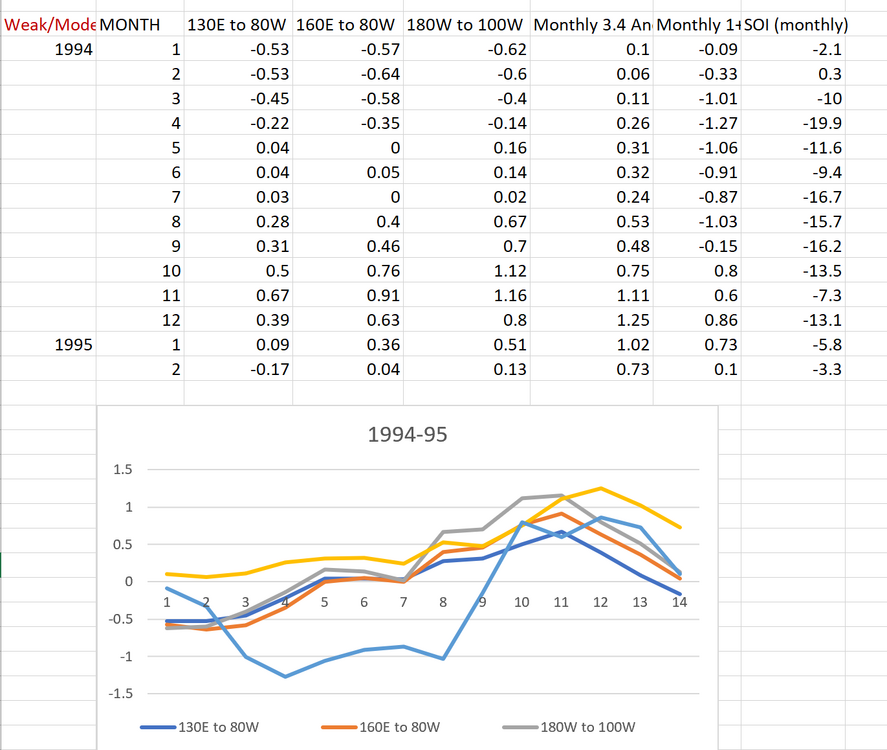
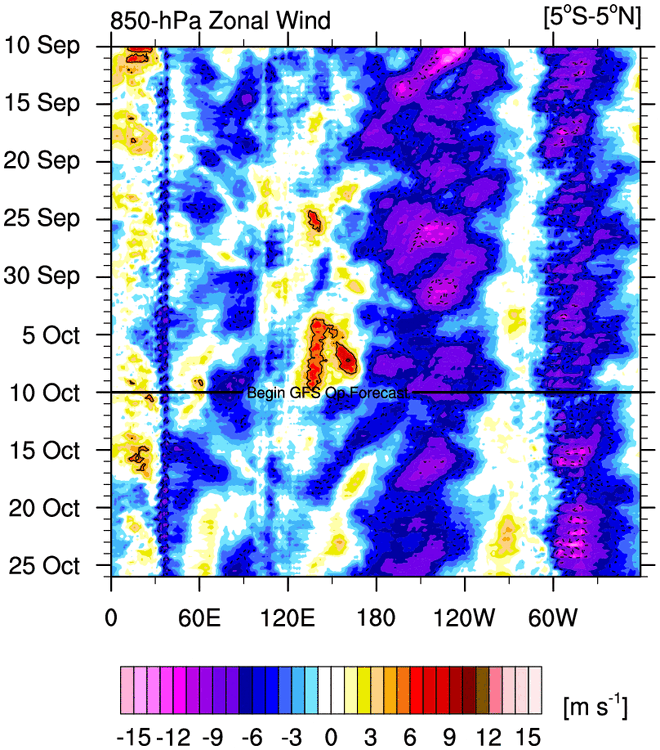
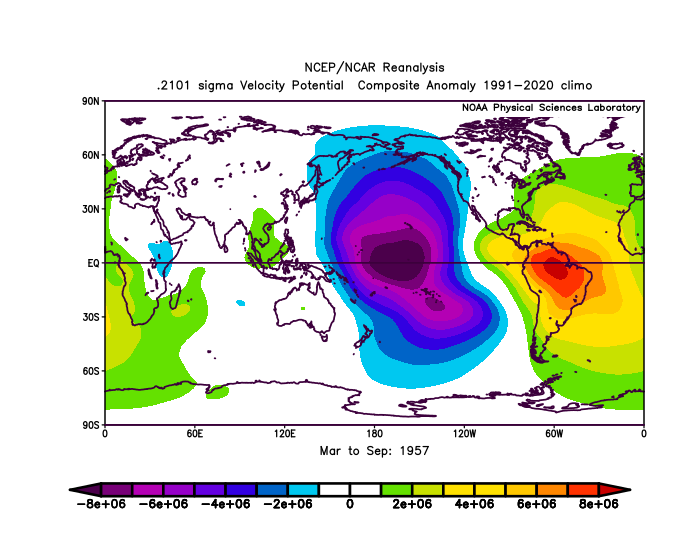
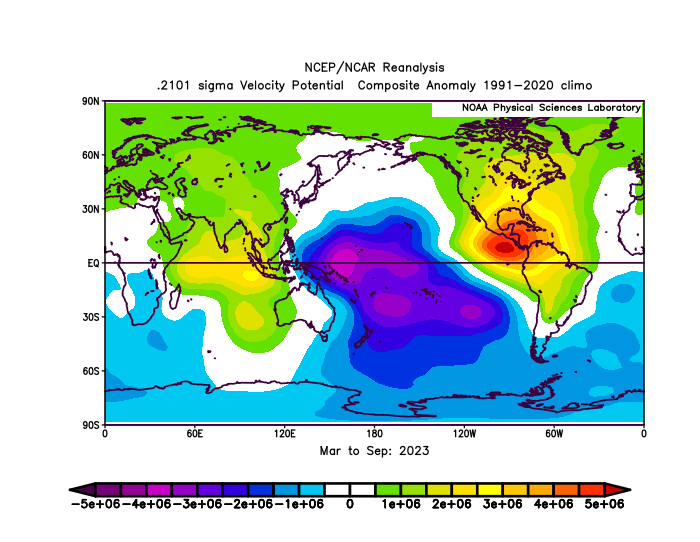

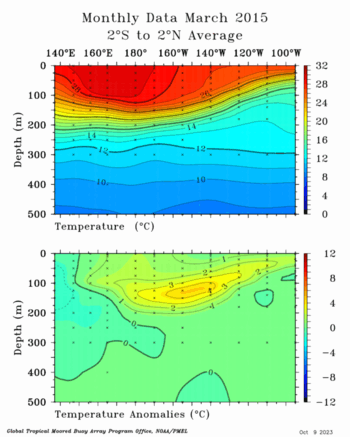

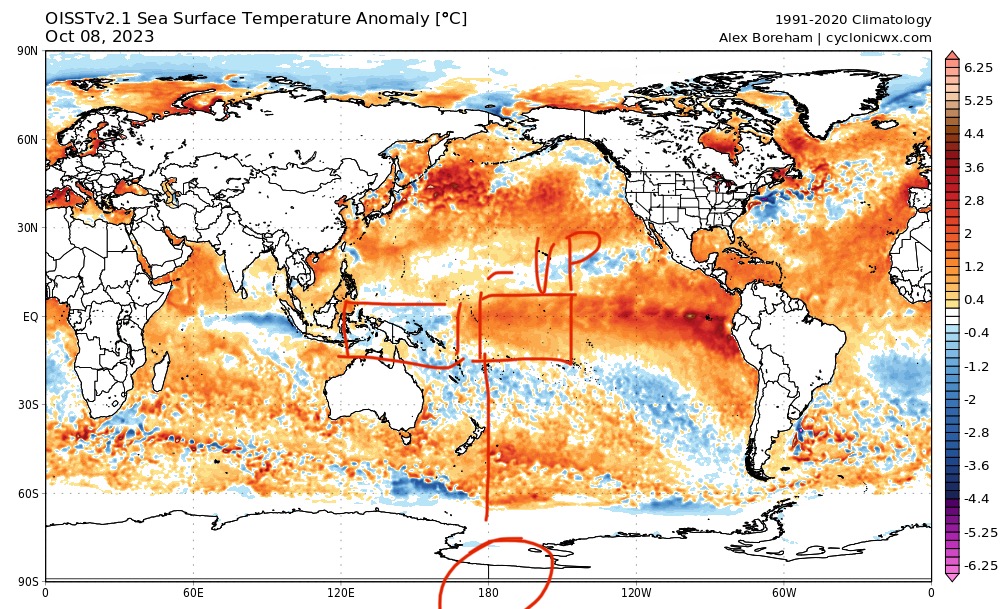
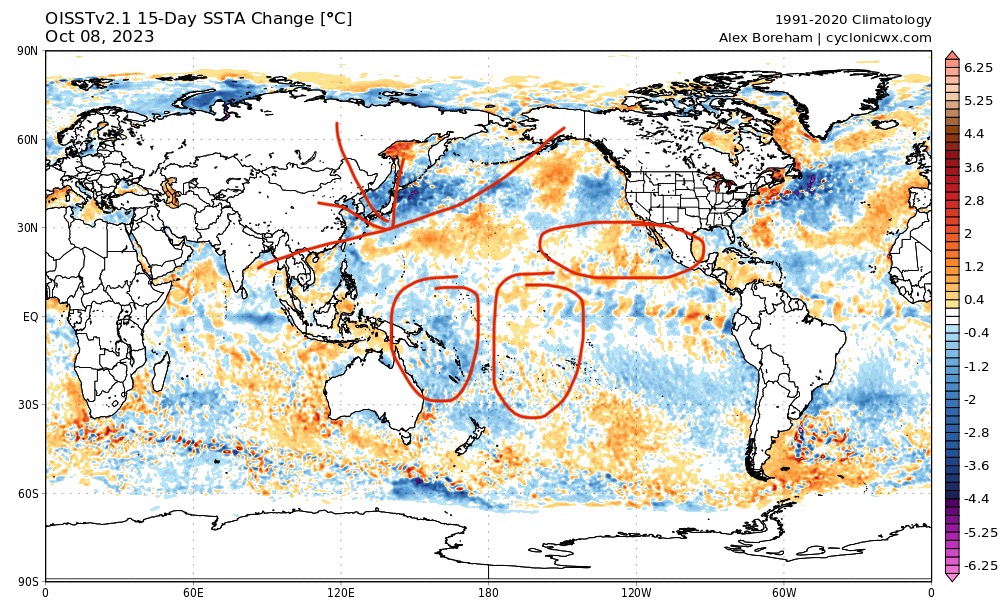

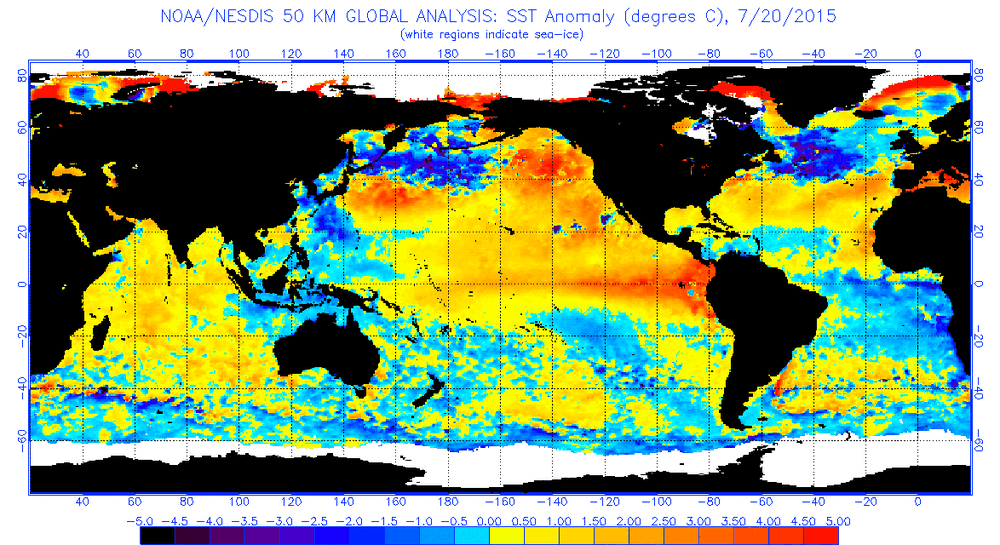
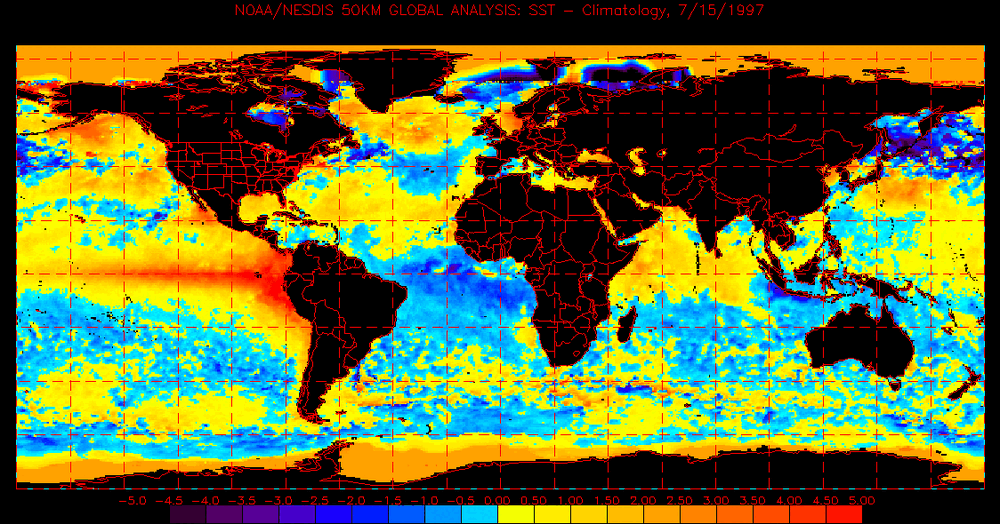
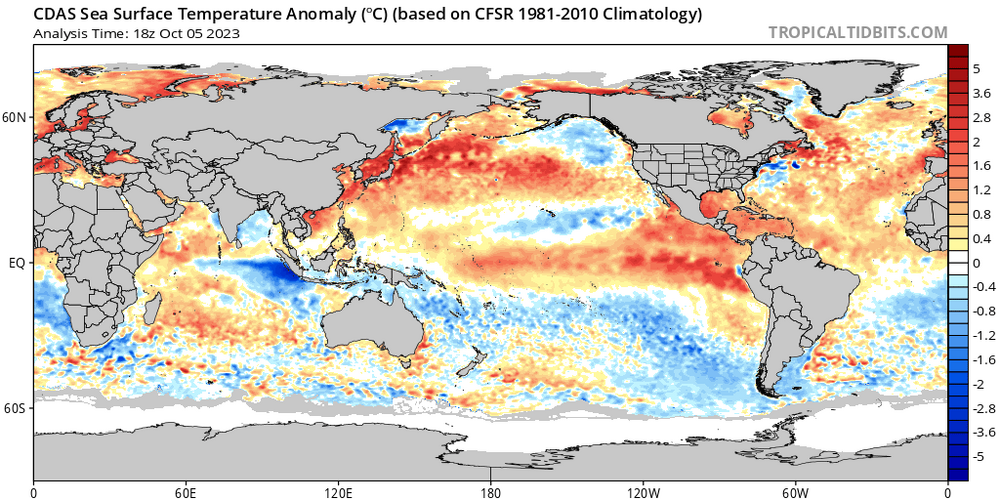
.thumb.gif.71af1e00d466e52edb281bbc57ec4ded.gif)
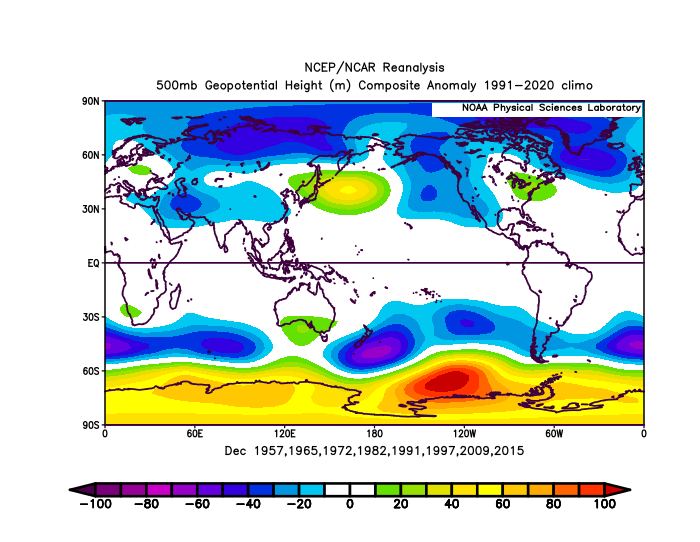

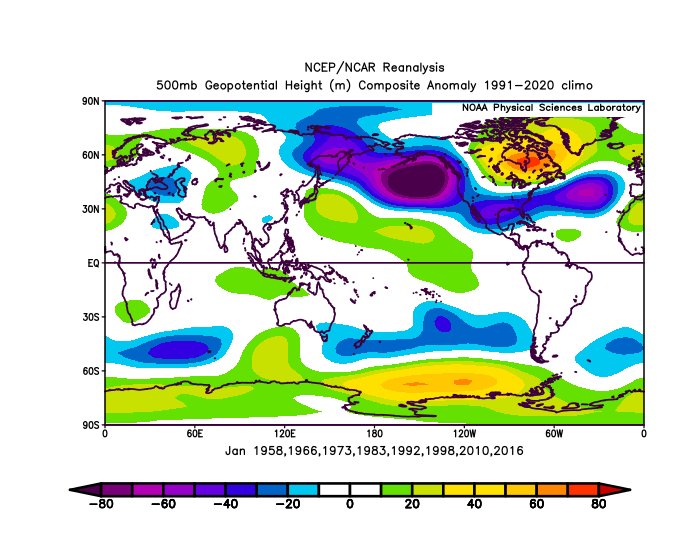

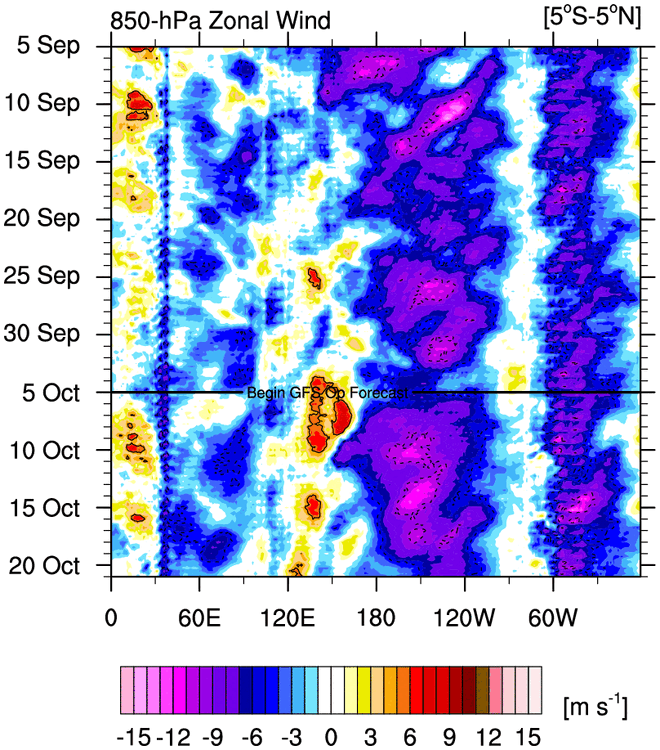
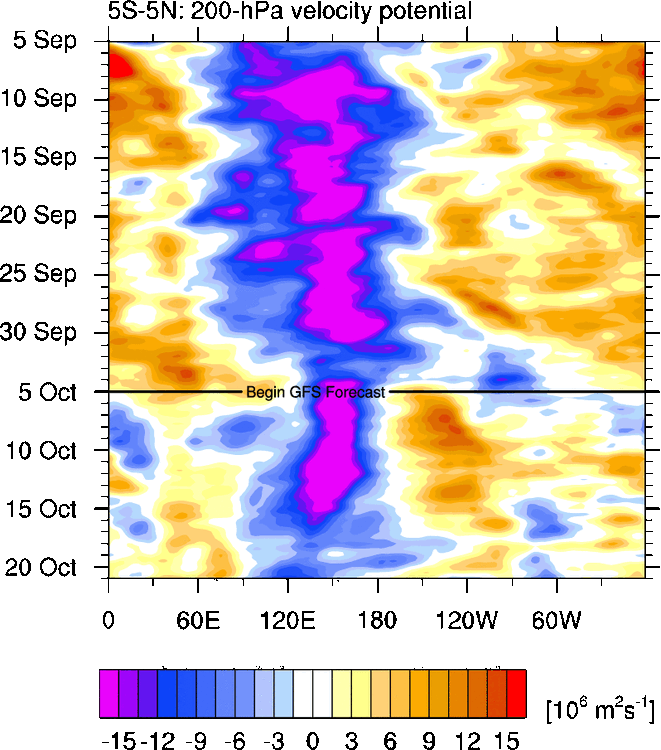
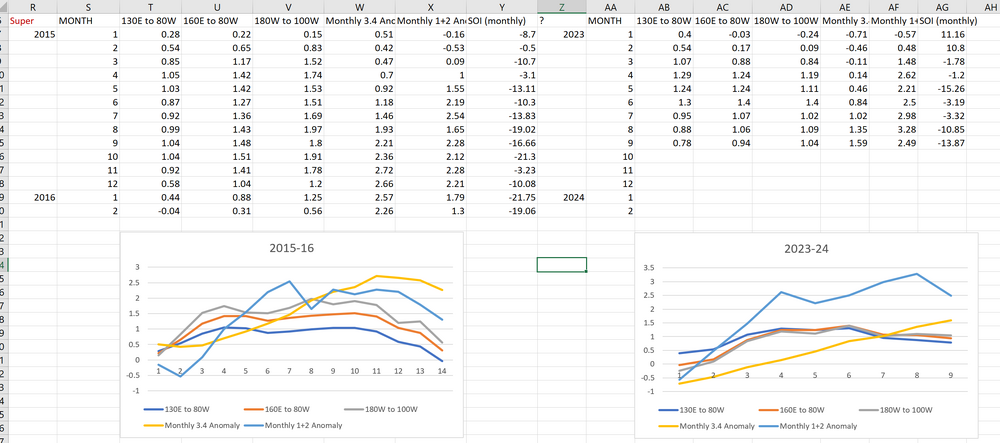
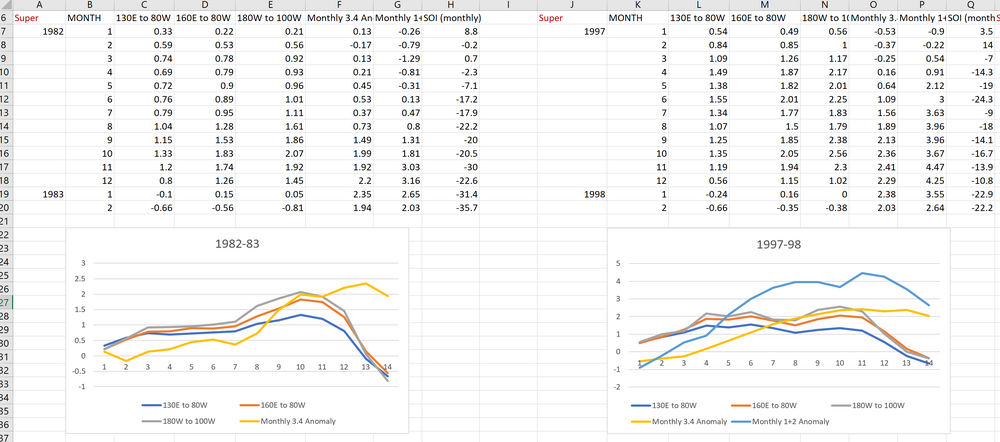
.thumb.gif.88f3c6422cb8e837abfb6da951934df8.gif)

El Nino 2023-2024
in Weather Forecasting and Discussion
Posted
Speaking solely from a station perspective (KBWI) we are a third through the month and those first 4-5 days at the beginning did a number on our average even with the much cooler pattern we have now we are still around +9 for the month and slowly falling. We would need to average around 2-3 below average each day for the rest of the month to get us below average area fairly tall order but possible. The SE should have a really good chance of producing a below average Oct further north is gonna be tough, but possible.